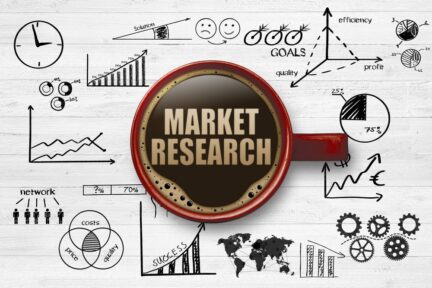MARKETS IN CONTINUOUS TRANSFORMATION
In recent years, international markets have been shaken by many unexpected events. It is now more necessary than ever to take stock of the situation. The information our salespeople give us is no longer enough. Of course, this is important information! But in today’s scenario it is no longer sufficient. Especially a small and medium-sized company – which usually does not cover many markets – needs to have a complete picture from a geographical point of view.

In Europe, the turnover of market research at the end of 2023 is 21 billion dollars, with an increase of 8% on 2022 (Source: the Italian Association of Market Research – Assirm). Assirm president Matteo Lucchi says: “This growth marks a cultural change. Now entrepreneurs understand that when making choices it is better to use scientific tools to make decisions and thus be less likely to make mistakes.” In my activity as a temporary export manager and export consultant, I, too, find that more and more companies ask me for information on market scenarios.
MARKET RESEARCH: EXPENSIVE?
Up until now, small and medium-sized businesses have paid little attention to market research. Due to cultural issues (the difficulty in seeing practical and real time feedback in the information contained), but also because it is considered too expensive. This is partly true. If we think about consumer market research done by companies like Nielsen or GFK, we certainly arrive at costs that are out of reach for small and medium-sized businesses. But there are also smaller research and data processing companies. With more accessible costs.
To guide our exports, for example, the indications given by the Export Planning platform are very useful. Knowing the “real time” trend of imports for a given product (or sector) of the various countries, or what the share of imports from Italy is, rather than having short or medium term forecasts by product/market/country competitor, etc. This is very useful information for defining export strategies for 2024. What does this mean in practice? In which markets should I be looking for a new distributor? Where will I do my trade fairs next year?
FarExport, for example, offers this information free of charge to companies associated with Confindustria Vicenza. Where the customs code of the company’s products is representative, this market information is really useful for guiding the efforts and defining the commercial choices of companies. But very often even associated companies are not aware of these useful services.
THE PUZZLE
Obviously market research can cover different areas: the target audience, competition, trends, etc. The number of topics is vast.
In my book Exporting in 7 Steps I compared market research to a puzzle. Today there is a lot of information online and if you have the patience and follow a method, you can find many pieces of this puzzle independently. Obviously, investing some time and a little skill.
Today, Generative Artificial Intelligence can also be of help. Here is an example: The use of Artificial Intelligence in internationalization processes.
The hope for 2024 is therefore to invest time and resources in these market knowledge activities. No longer trusting only hearsay or “what our gut tells us”. This way we will be able to define our export strategies with less risk of failure. I also talked about these themes in the post: Good Resolutions for 2024.
